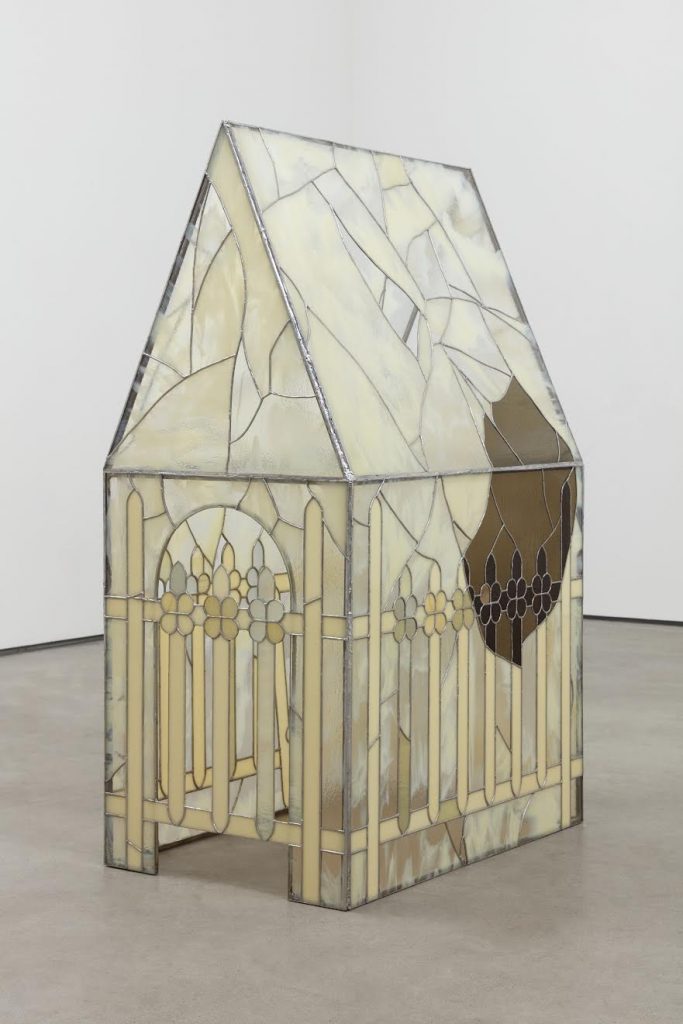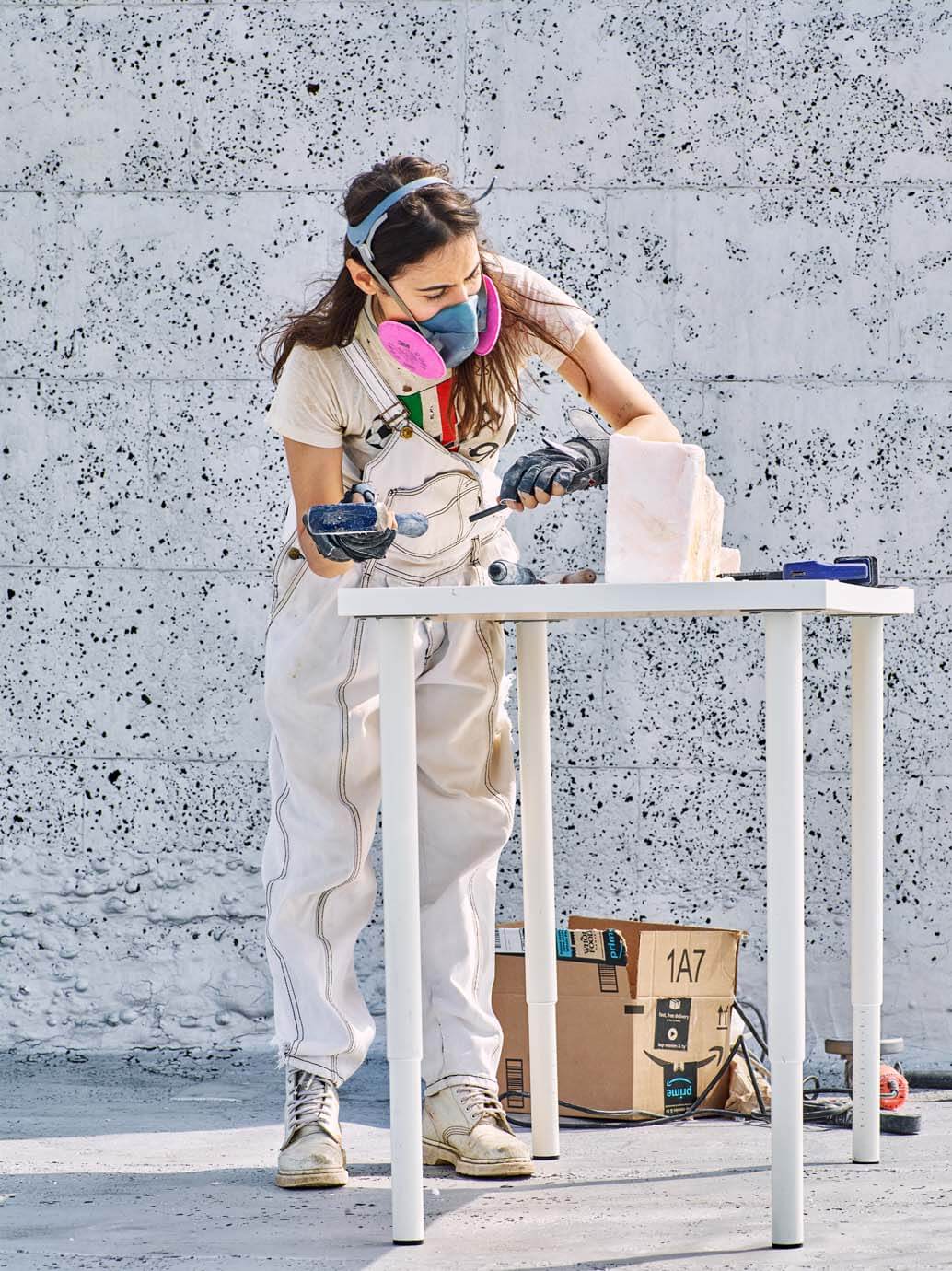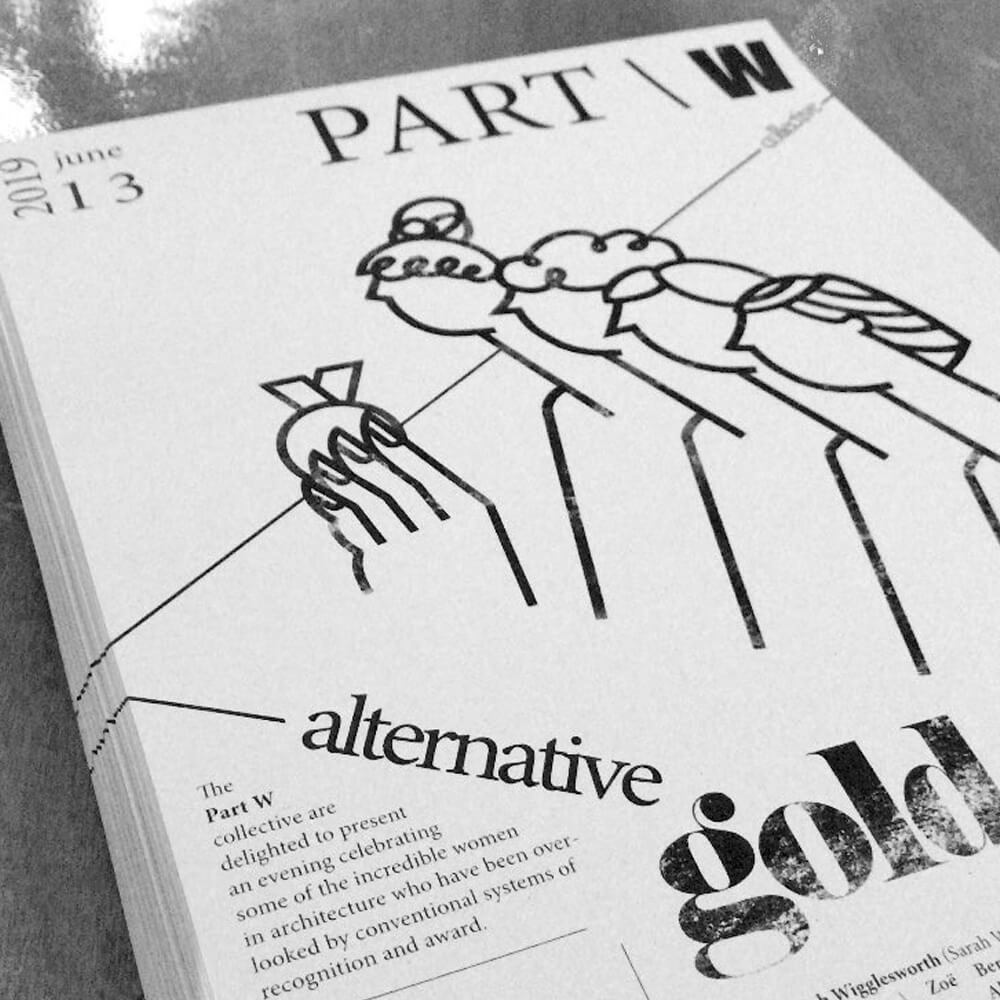Fin Simonetti’s Magical Thinking

In quests for security and self-soothing, ecclestiastical thinking is often sought out as a portal for respite. In her most recent solo show, Our Denomination, Fin Simonetti’s work serves as a kind of contemporary examination of the sacred and the collective, and how these ideas can be tethered to basic human needs in the face of vulnerability. The show was displayed on bleachers, where Simonetti’s stone and padlock pacifiers subvert our ideas of what soothing mechanisms are, both historically and materially. The gallery walls are graced by three rose windows, inlaid with the same stone and steel. Through these mediums, she not only reminds us of our reliance on objects for comfort; she shows us that we still can find gateways to communion in our day to day, though perhaps they don’t resemble denominations of the past.
Simonetti works in sculpture and stained glass. Born in Vancouver, British Columbia, she received her BFA from the Ontario College of Art and Design in 2009 and has exhibited internationally at Matthew Brown (Los Angeles), Cooper Cole (Toronto), and MoMA PS1 (New York), among others. Her work has been discussed in The New York Times, The New Yorker, Cultured Magazine, and Canadian Art. This year, she will also release her second studio album. She lives and works in Brooklyn.
FRONTRUNNER presents a discussion with Simonetti, examining themes of control, visceral fear, protection, and desires for security.

Photo credit: Aubrey Mayer
You’ve lived on both the East and West coasts – Vancouver and New York, respectively. How have they influenced you separately and subjectively, if at all? How is designing and producing on both coasts?
For the most part, the work I make in different locations is dictated by my studio set up. I generally work on sculptures in New York, because my studio has the tools and space I require to work with dirty materials and at a larger scale. I generally find being in Vancouver more conducive to working on music or drawing. Vancouver is also less stimulating, and it’s easy to hunker down and work in a very insular capacity.
I love how you utilise stained glass so often in your pieces, which are traditionally used in religious iconography. How did the medium as an early influence shape you? I know you’ve referenced your Italian heritage before in interviews …
I learned stained glass from my zio (uncle). My dad’s side of the family emigrated from Italy, stained glass is a trade that my family worked with in Italy, and continued work [with] when they came to Canada. My zio’s stained glass work is all over Toronto in churches and public buildings. Overall in my practice, I’m generally interested in religion as an entry point into magical thinking, and stained glass’ history within ecclesiastical architecture is an obvious jumping off point. Religious denominations interest me in particular because the boundary of that in-group is drawn around abstract and ephemeral things — like moral codes, ideas of death/afterlife, prayer, belief in God, etc… Beyond just an affiliation or allegiance, its boundary is drawn/divided along the perception of reality.
How do you see the role of security in your work? How do you use materials to engage with this concept?
I tend to use materials that are either fragile or heavy (or both), and I sometimes lean into those qualities to increase the sensation of precarity. For example, I often use railings in place of plinths, and I’ll sometimes intentionally make the base of a sculpture larger than its display armature — so that the piece hangs over the edge. There are subtle ways I stage work to increase the tension in the space.

Gusset 1 (2019)
Stained glass
18 x 36 x 6 inches
Courtesy of the artist and Cooper Cole (Toronto)
You say that there are themes of emergency and alienation in your pieces as well – interesting considering the past few years we’ve gone through. Have these years changed what these concepts mean for you?
Themes of emergency and alienation recur in my work, but these ideas are not in response to current events. Personally, I’m not interested in making topical work. That being said, I understand that the social/political context affects how the audience relates to what they are seeing. For example, I recently made a series of pacifier-like sculptures carved in stone, in which the “ring” on the back of the pacifier is a lock shackle. Two of these pieces were in a group show that happened to open on the same day that Roe. v Wade was overturned — and a lot of people read that work as being about reproductive rights. That is not what those pieces are about for me, but I understand that context shifts how the work is read.
You’re right about context definitely holding weight when examining art. How would you prefer for audiences to locate these conceptual through-lines, especially pertaining to your Cooper Cole show?
The work in Our Denomination at Cooper Cole is mainly centered around ideas of “in-groups” as a sort of coping mechanism. I have been thinking about how participation in a collective identity is a form of security in itself. For this show, I had some of the sculptures displayed on bleachers. I think of the bleachers as a metaphor for the “public”, or for an in-group that you can publicly opt in to. The way the installation is staged, the bleachers could also be read as pews.

Pacifier 3 (2022)
Rosso Alicante marble, Portuguese pink marble, lock shackle
2 x 3.5 x 5 inches
Courtesy of the artist
What other kinds of themes or bodies of work do you want to produce in the future?
I have a bunch of work underway that I’m not able to speak to yet, but I can say that some of my future work will naturally look like and relate to things I have made in the past, and some will be completely different. I really believe the best work is produced when you follow your impulses as they evolve, rather than restrict yourself to a tight menu of materials and ideas.









Responses